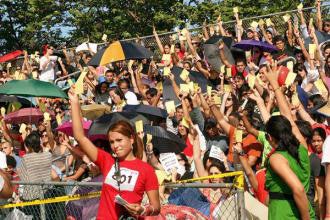The University of Puerto Rico system has been locked in an indefinite, student-led strike since early April, echoing similar student-led protests in 2010. The protests in 2010 were in response to a proposed tuition hike. Today, the struggle is over the future of the UPR system.
Puerto Rico is deep in the midst of a major financial crisis years in the making. The island currently is $74 billion in debt and holds $49 billion in pension liabilities.

Since its creation last August, the board’s gaze has fallen on publicly funded higher education on the island. In March, the board proposed trimming UPR’s budget to $450 million by 2021. As a result, the stakes are higher than ever for UPR’s future.
Currently, UPR receives approximately $800 million annually from the Puerto Rican government, representing around 80 percent of the overall university budget. Reducing the budget by nearly half over just a few years would most likely have severe consequences for the university system, which is currently the largest provider of higher education on the island.
“It’s a major, major cut, without precedent in any university system in the United States,” said Dr. Hector Cordero-Guzman, professor at the Marxe School of Public and International Affairs at Baruch College. “There’s not a single public university system in the United States that’s been asked to manage a cut of this size and proportion over a period of this time.”
Higher education is one of Puerto Rico’s strengths, Cordero-Guzman said. Due to broad public support for higher education, UPR has been able to keep the cost of tuition low, allowing Puerto Ricans to attend college at an affordable rate for decades.















